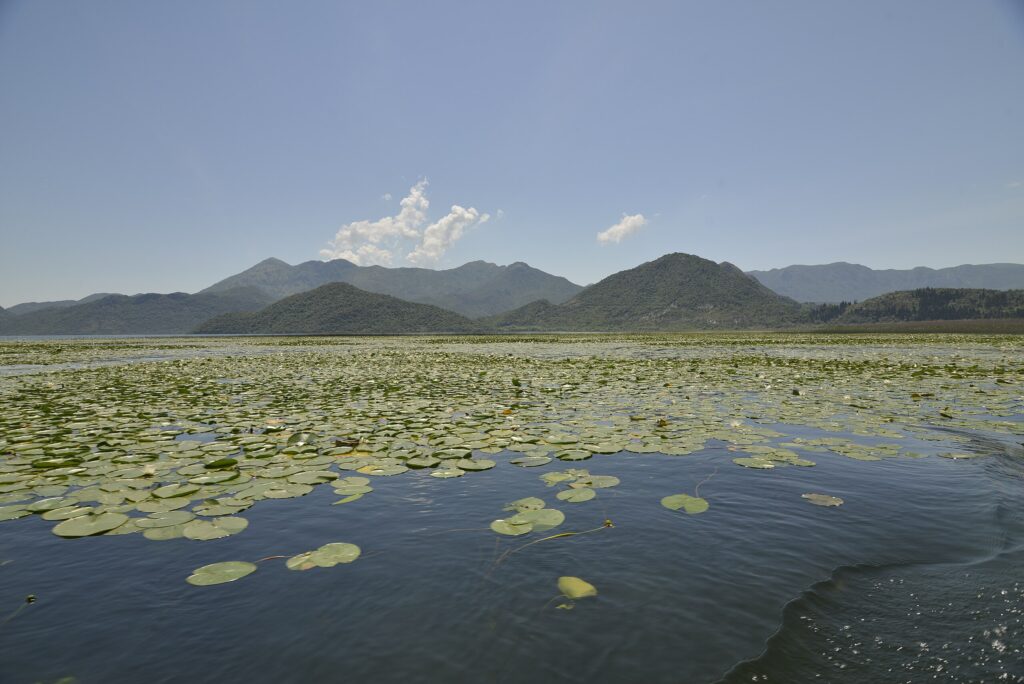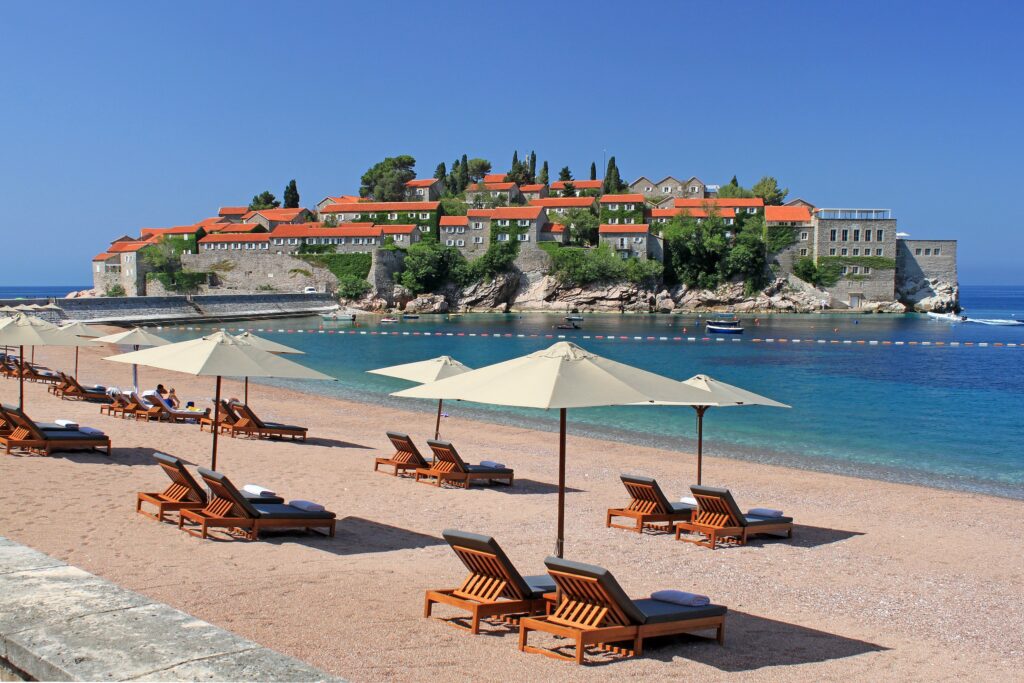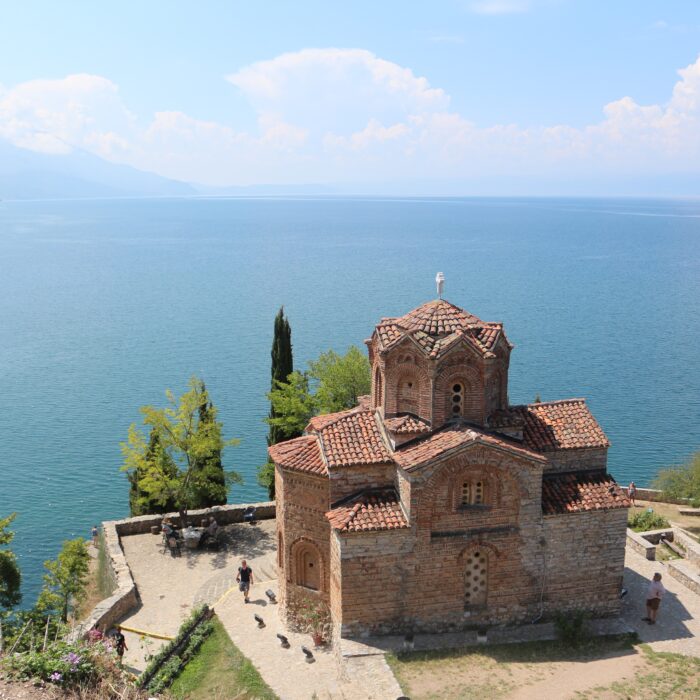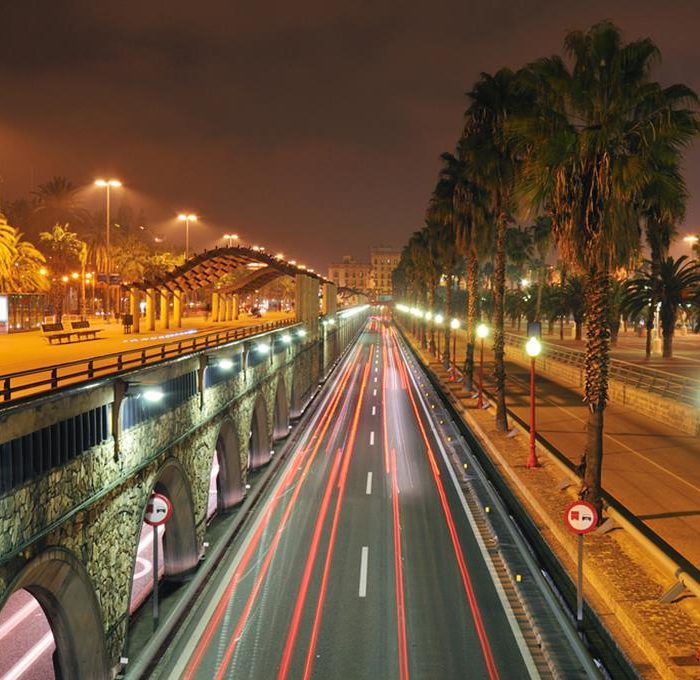Quick facts about Montenegro:
- Location: Southeastern Europe, on the Balkan Peninsula.
- Capital: Podgorica.
- Official Language: Montenegrin.
- Currency: Euro (EUR).
- Population: Approximately 620,000.
- Size: Around 13,812 square kilometers.
- Independence: Montenegro declared independence from the State Union of Serbia and Montenegro in 2006.
- Adriatic Coast: Boasts a stunning coastline along the Adriatic Sea.
- Tourism: A popular destination for its natural beauty, historic sites, and coastal resorts
Fact 1: Gulf of Kotor is the southernmost fjord in the world
The Gulf of Kotor, located in Montenegro, is often referred to as the southernmost fjord in the world. While it does not meet the strict geological definition of a fjord, which is typically formed by glacial activity, the Gulf of Kotor shares similar characteristics with fjords, including steep cliffs and a narrow, winding shape.
The Gulf of Kotor is renowned for its stunning scenery, medieval towns, and the contrast between the deep blue waters and the surrounding mountains. This unique and picturesque coastal feature contributes to Montenegro’s appeal as a destination for travelers seeking natural beauty and cultural richness.

Fact 2: Montenegro has the largest canyon in Europe
The Tara River Canyon in Montenegro is recognized as the largest canyon in Europe and the second-largest in the world, with a depth reaching around 1,300 meters (4,265 feet) and a length of approximately 82 kilometers (51 miles). The Tara River Canyon, part of Durmitor National Park, is a spectacular natural wonder known for its dramatic cliffs, pristine river, and diverse flora and fauna. The canyon’s breathtaking landscapes, crystal-clear waters, and the Tara River’s meandering course make it a popular destination for outdoor enthusiasts, offering activities such as rafting and hiking.
Note: If you plan to visit the country, check the need for an International Driver’s License in Montenegro for driving.
Fact 3: Skadar Lake is the largest lake in the Balkans
Skadar Lake, also known as Lake Scutari or Lake Shkodra, is the largest lake in the Balkans. It is situated on the border between Montenegro and Albania, with the majority of its surface area belonging to Montenegro. The lake is renowned for its rich biodiversity, diverse bird species, and picturesque landscapes.
Skadar Lake covers an area that can vary seasonally but is generally around 370 square kilometers (142 square miles). It is a vital habitat for numerous bird species and is recognized as a Ramsar Wetland of International Importance. The lake’s scenic beauty and ecological significance make it a popular destination for nature lovers and tourists.

Fact 4: The Montenegrin language is very close to the Serbian language
Montenegrin, Serbian, Bosnian, and Croatian are closely related South Slavic languages, often collectively referred to as the Serbo-Croatian language. These languages share a high degree of mutual intelligibility, and speakers of one language can generally understand and communicate with speakers of the others.
The linguistic differences among them are primarily related to regional dialects, local vocabulary choices, and, to a lesser extent, variations in grammar and pronunciation. In Montenegro, the official language is Montenegrin, which is essentially the same language as Serbian but may exhibit some differences in vocabulary influenced by historical and cultural factors. Despite these differences, speakers of Montenegrin and Serbian can easily understand each other.
Fact 5: Montenegro has more than 100 beaches
Montenegro is known for its picturesque Adriatic coastline, and the country boasts more than 100 beaches along the Adriatic Sea. These beaches vary in size, type (sandy or pebbly), and ambiance, offering visitors a diverse range of options for seaside relaxation and enjoyment.
Popular coastal areas such as Budva, Kotor, and Ulcinj feature numerous beaches, each with its own unique charm. Whether nestled in secluded coves or stretching along vibrant seaside towns, Montenegro’s beaches contribute to the country’s appeal as a destination for sun-seekers and nature enthusiasts.

Fact 6: A large part of Montenegro is above 1000 meters
Montenegro is characterized by its mountainous terrain, and a significant part of the country is above 1000 meters in elevation. The Dinaric Alps, which extend through Montenegro, contribute to the rugged and elevated landscape.
Prominent mountain ranges, such as Durmitor and Komovi, have peaks that surpass 2000 meters. Additionally, the average elevation of Montenegro is relatively high compared to many other European countries, with much of its inland area featuring elevations above 1000 meters.
This topographical diversity adds to the scenic beauty of Montenegro and provides opportunities for outdoor activities, including hiking and enjoying breathtaking mountain landscapes.
Fact 7: Despite the size of the country, Montenegro has impressive biodiversity
The country’s diverse landscapes, which include mountains, forests, lakes, and a coastline along the Adriatic Sea, contribute to the richness of its ecosystems. Montenegro’s impressive natural diversity includes over 3,000 plant species, more than 350 bird species, and a variety of mammal and reptile species. The country’s diverse ecosystems, from the mountainous regions to the coastal areas, contribute to its remarkable biodiversity, making it a haven for nature enthusiasts and conservation efforts.

Fact 8: Montenegro is not part of the EU but uses the Euro
Montenegro is not a member of the European Union (EU), but it unilaterally adopted the Euro (EUR) as its official currency. The country’s decision to use the Euro was made without a formal agreement with the European Union or being part of the Eurozone, which consists of EU member states that have adopted the Euro as their official currency.
Montenegro’s adoption of the Euro simplifies transactions and trade, especially given its close economic ties with Eurozone countries and its reliance on tourism. However, it’s essential to note that the country is not bound by the EU’s economic and monetary policies as a non-member state.
Fact 9: There is an olive tree in Montenegro that is about 2000 years old
This particular olive tree, known as the “Stara Maslina” or Old Olive Tree of Bar, is considered one of the oldest olive trees in Europe. It is estimated to be over 2,000 years old, making it a symbol of cultural and historical significance.
The Old Olive Tree of Bar is not only a natural monument but also a tourist attraction, drawing visitors interested in its ancient heritage. For the most current and specific information, especially regarding the condition and status of this tree, it is advisable to check with local authorities or visitation sites in Bar.

Fact 10: Montenegro is home to the rainiest place in Europe
Crkvice in Montenegro is often cited as one of the wettest places in Europe. The annual precipitation in Crkvice can range significantly, but it is known to receive several thousand millimeters of rainfall each year. Reports suggest an average annual precipitation of around 4,928 millimeters (approximately 194 inches), making it one of the rainiest locations on the continent. Keep in mind that these figures can vary from year to year.

Published February 26, 2024 • 6m to read





